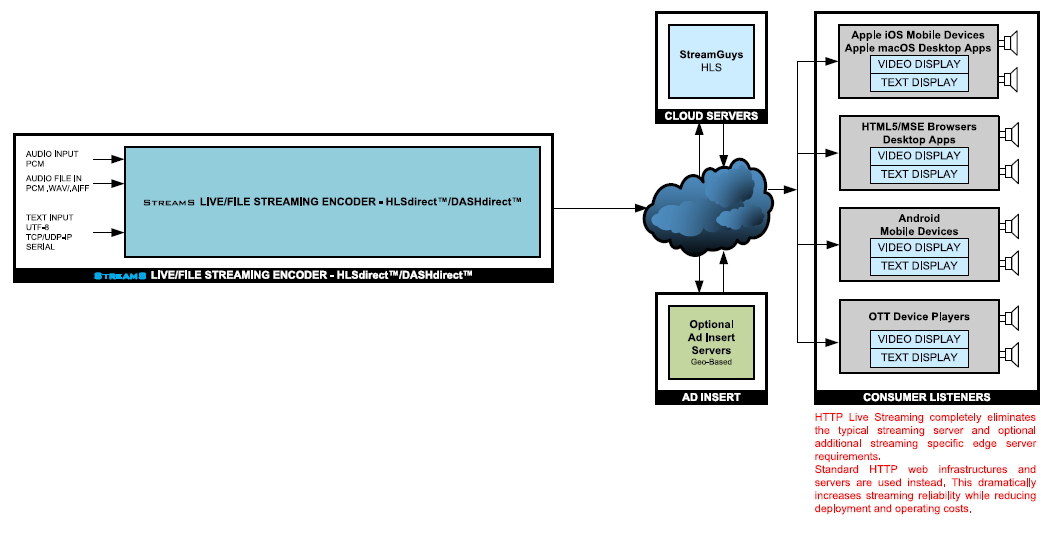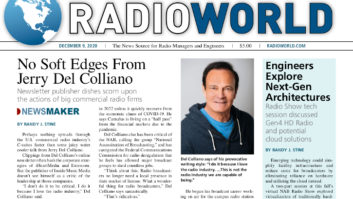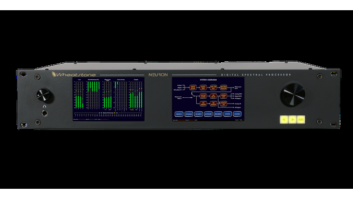Streaming is not a static technology. New innovations are constantly being developed.
Many video and “over the top” streamers have discovered the advantage of CMAF, the Common Media Application Format. This format, explained in standards document ISO/IEC 23000-19:2020, offers advantages to the streamer that are finally being recognized for audio-only streaming.
Technology companies StreamS and StreamGuys recently announced joint support for it. StreamS is part of Modulation Index, a company that offers streaming encoders and internet audio products and is headed by Greg Ogonowski, founder of Gregg Laboratories and former VP of product development at Orban.
StreamGuys is a service provider of live and on-demand streaming, podcasting delivery, and software-as-a-service (SaaS) toolsets.
Why does this matter to Radio World readers?
As the companies put it, their goal is to provide “next-generation, high-performance live audio streaming using fully compliant standards-based CMAF HLS for low-latency, adaptive-bitrate HTTP Live Streaming (HLS). Together, both provide a complete end-to-end streaming solution that is reliable, scales to rapidly growing large audiences and reaches more modern devices with stunning audio quality.”
Container format
Please note that various companies will offer different flavors of a format, which is a problem with generic formats. Someone one said that the beauty of standards is that there are so many. Unfortunately, there are also a multitude of interpretations.
As a result, many existing streaming protocols have been modified and hacked to the point of becoming proprietary, leading to compatibility issues among streaming servers and player clients and devices. Will the disparity end? Probably not in the foreseeable future.
This particular solution is working hard to stay compatible with Apple Music. StreamS makes the hardware and software solution, and StreamGuys is the content delivery network or CDN.
Many formats are needed for streaming: the encoding format (i.e. xHE-AAC), the transport format (i.e. HLS), and the container format. CMAF is an example of a container format:
- It can contain your audio and video plus all the associated metadata.
- ID3 metadata is supported.
- Commercials can still be injected from multiple networks.

Why is the announcement from StreamS and StreamGuys a good idea?
Consider that the World Wide Web was designed to present static or small files. It was not originally thought of for presenting non-ending streams; streaming was conceived later.
CMAF takes your content and chops it into segments, sending it to the Content Delivery Network. CMAF then instructs the player how to reassemble and present it, thus getting rid of many of the typical issues associated with streaming.
Greg Ogonowski, president of StreamS, notes that a “streaming server” is no longer essential to send the stream out.
What about latency? The delay of the content from encoding to playback has been the sworn enemy of the streamer.
CMAF can reduce (though not eliminate) latency. With a smaller payload, buffering and unwanted stream disconnections are lessened greatly.
To achieve less latency they are using this with HLS, which stands for HTTP Live Streaming, an adaptive bitrate streaming communications protocol developed by Apple Inc. Yes, that Apple. So there is instant compatibility with all of the iPhones out there. Yes, Android supports HLS out of the box, though support depends on the version of Android.
So compatibility is there. With HLS, latency is closely tied to the duration of the media segments that you’re using.
“HLS is getting a whole lot better with CMAF,” said Kiriki Delany, president of StreamGuys, in the press release announcing the partnership. “We are excited to support ultra-low latency and simplify deploying HLS.”
Delany said HLS provided efficient ways to switch networks while maintaining a stream, as well as savings on power consumption for mobile devices; it also introduced much higher latency than traditional true-streaming systems.
“CMAF changes that by allowing encoding to happen much faster, which greatly reduces file-based buffers. Meanwhile, xHE-AAC, once adopted by all major browsers and mobile platforms, will simplify what codecs are needed on the decoder side. It will support very low bitrates, like 12 kbps for speech, to very high bitrates, such as lossless ALAC/FLAC formats. This simplification will mean larger reach, and lower barriers to cross platform compatibility.”
As a bonus, the higher adoption of lossless formats ALAC/FLAC for “fine arts formats” also invites the audiophile to enjoy streaming.
The introduction of CMAF and HLS is a big step for streaming radio and audio-only services. Hopefully others will get on board.
The author is a broadcast and streaming consultant and co-chair of the Audio Engineering Society’s Technical Committee for Broadcast and Online Delivery.







